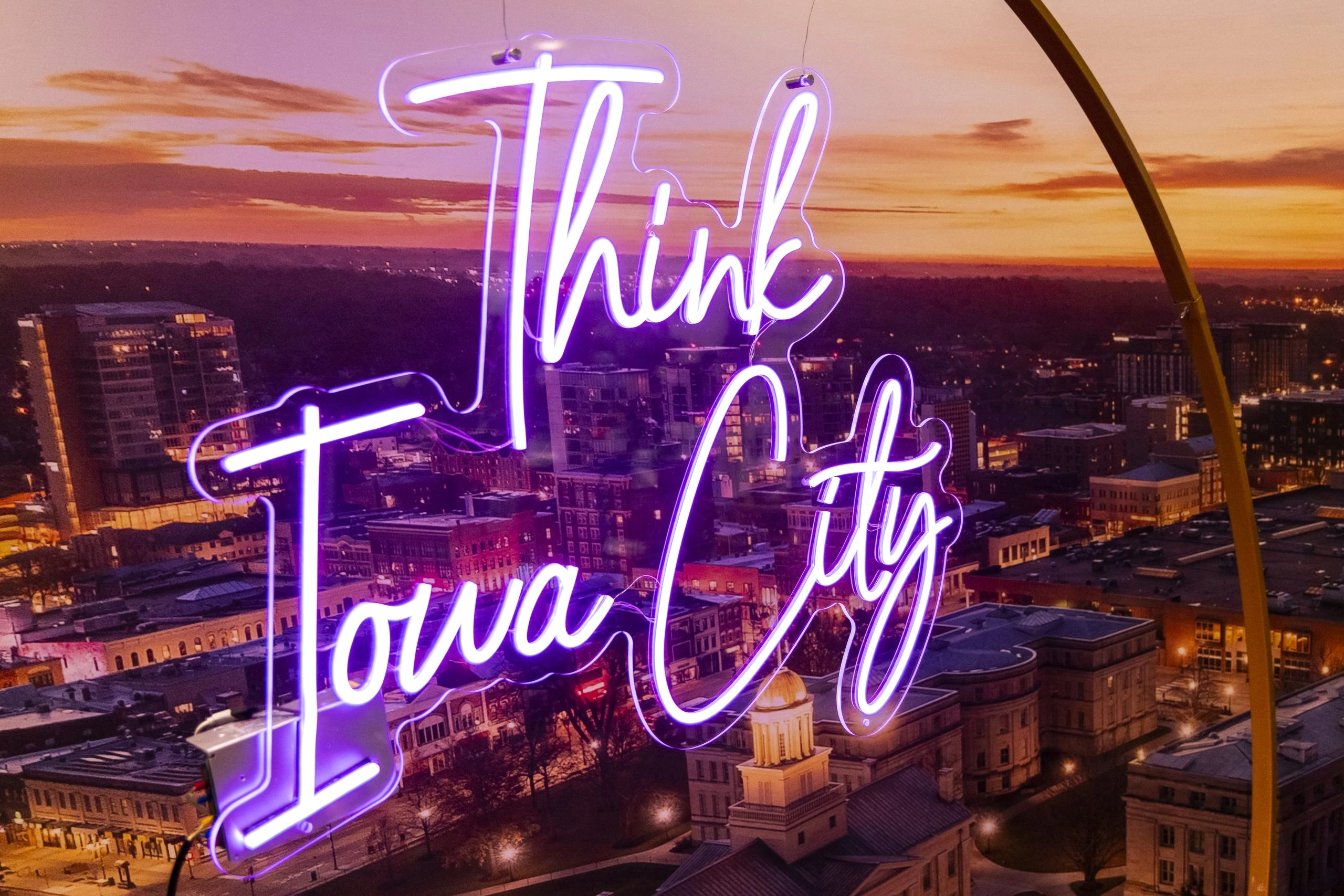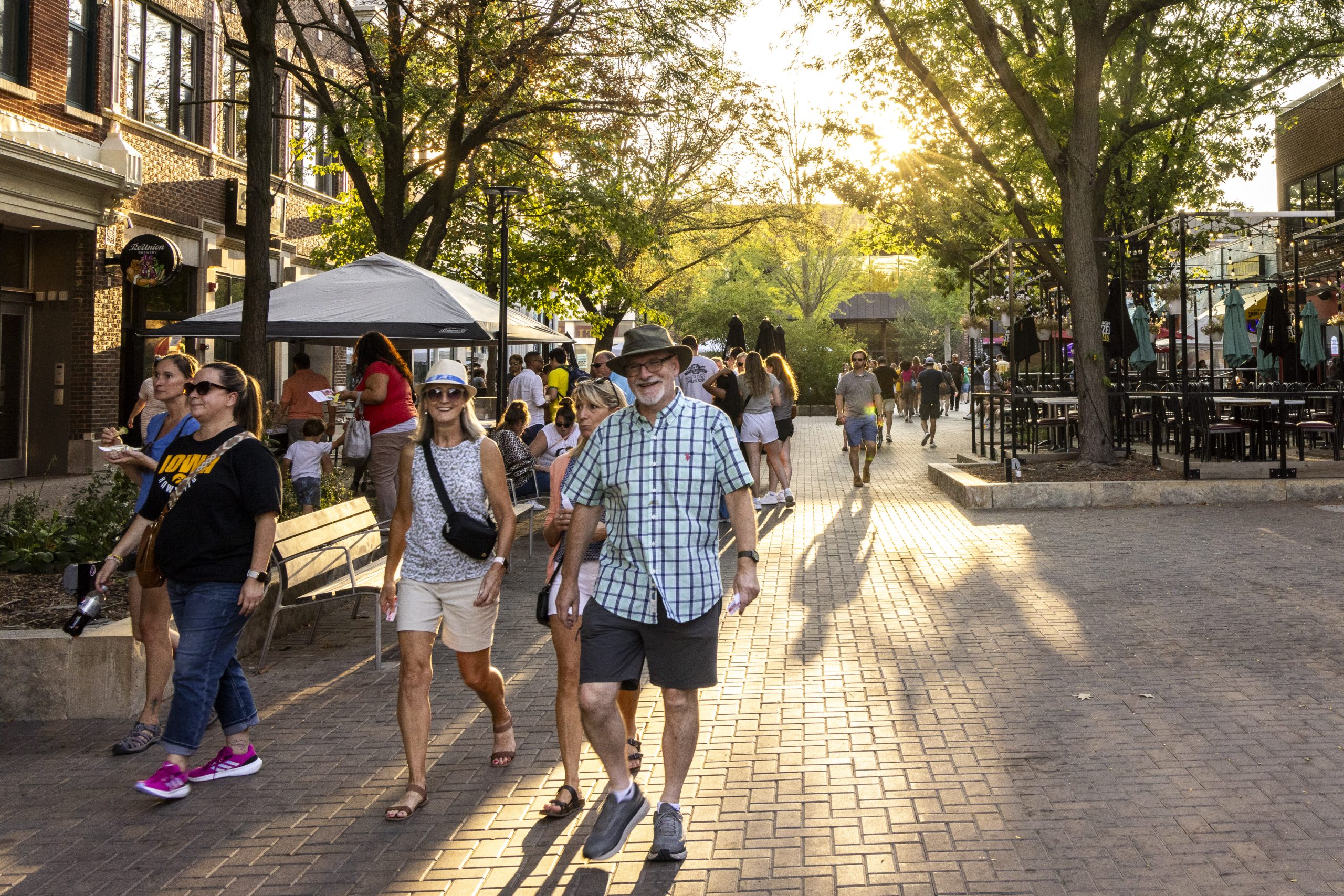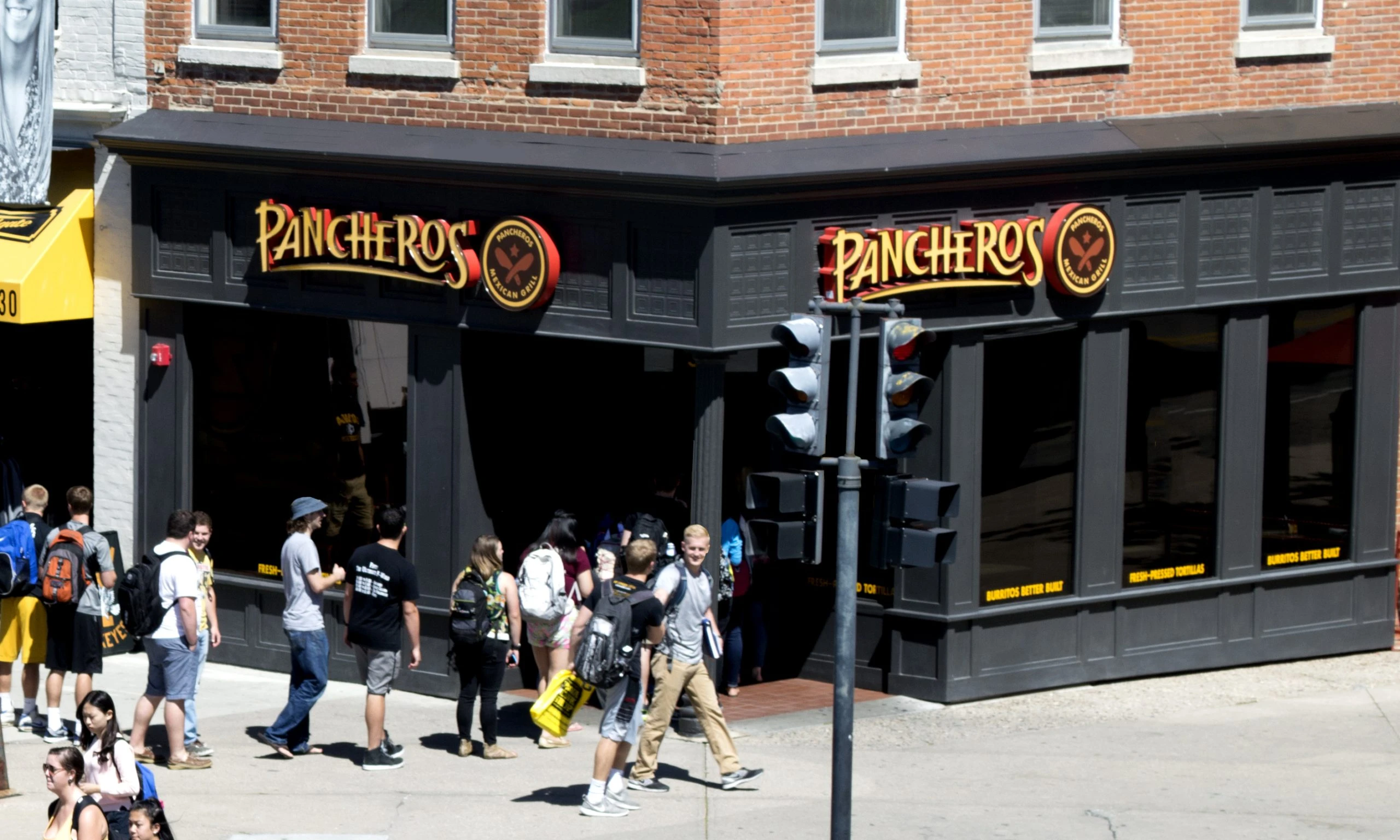10 Cool Facts about the Iowa City Area (and Reasons You’ll Want to Plan a Visit)
If you ask someone what they know about the Iowa City area, you’ll probably hear some common threads. Whether you’re chatting with a local or someone who has just heard about the area in passing, you’re sure to hear interesting insights on the literary scene, some history about the University of Iowa, and of course, the Hawkeyes. There are so many cool and unusual things about the area, and some don’t get the attention they deserve.
Below we are highlighting 10 interesting facts about the Iowa City area, including a few that might surprise you. Our list might even inspire you to plan a visit to some of the lesser-known attractions. You might also see some of these popular hotspots with a new appreciation or eagerly share a fun fact next time you’re visiting with your friends.
10 Cool & Unusual Facts About the Iowa City Area
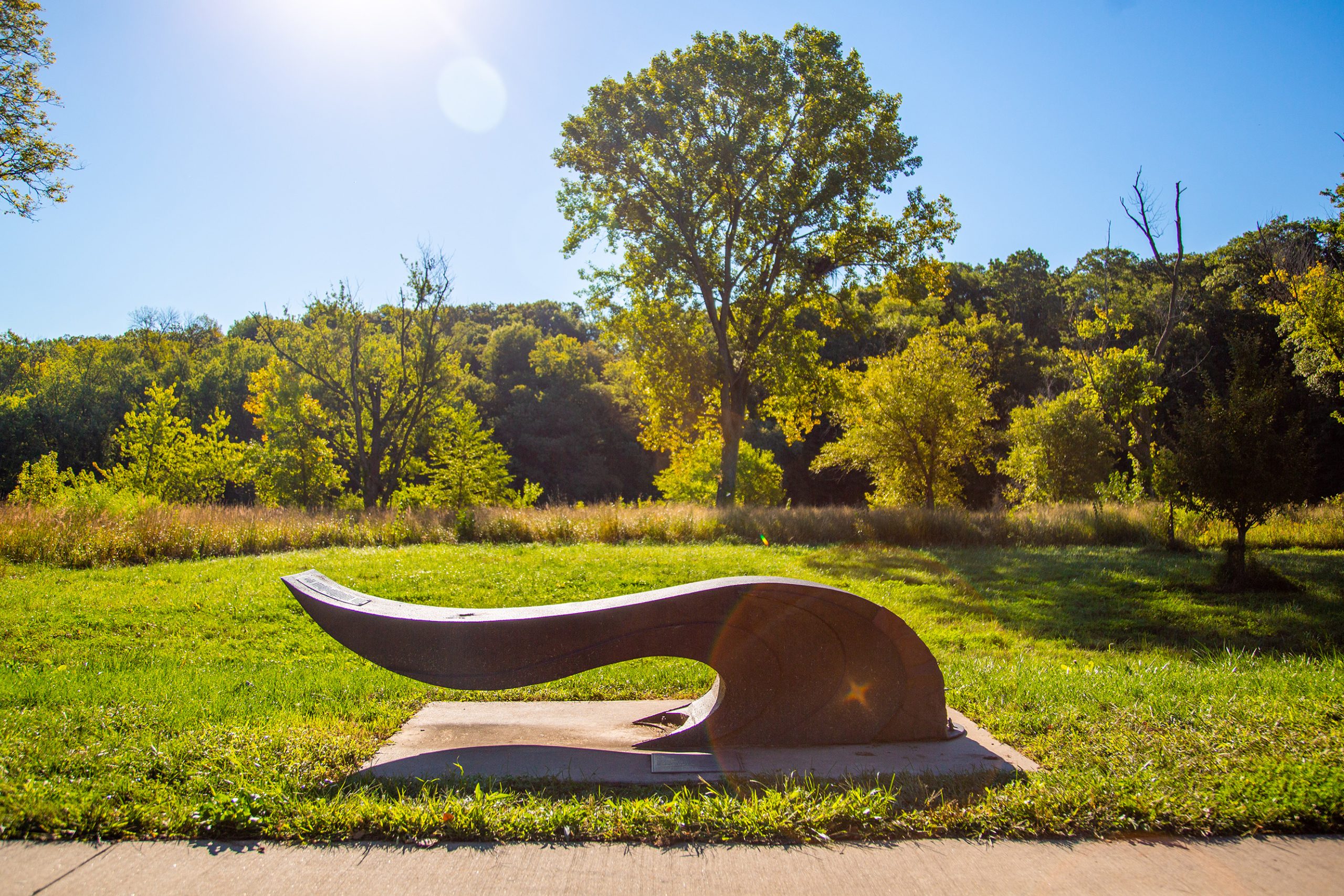
1. All the sculptures in the Iowa River Landing Sculpture Walk are from Iowa artists
The Iowa River Landing Sculpture Walk was established in 2013 along the Iowa River Trail. It features 11 sculptures inspired by a work in the Iowa Writer’s Library. Each artist has local roots and is from Iowa. Each unique work of art includes an explanation of how artists decided to represent literary works visually. You can check out the map and the details behind every sculpture here.
When you visit, make a day at the Sculpture Walk! After checking out the art on the trail, you can explore the many shopping and dining options around Iowa River Landing. You can also pop into the Hyatt Regency Coralville Hotel & Conference Center to see the renowned Iowa Writer’s Library and the books that inspired the sculptures.
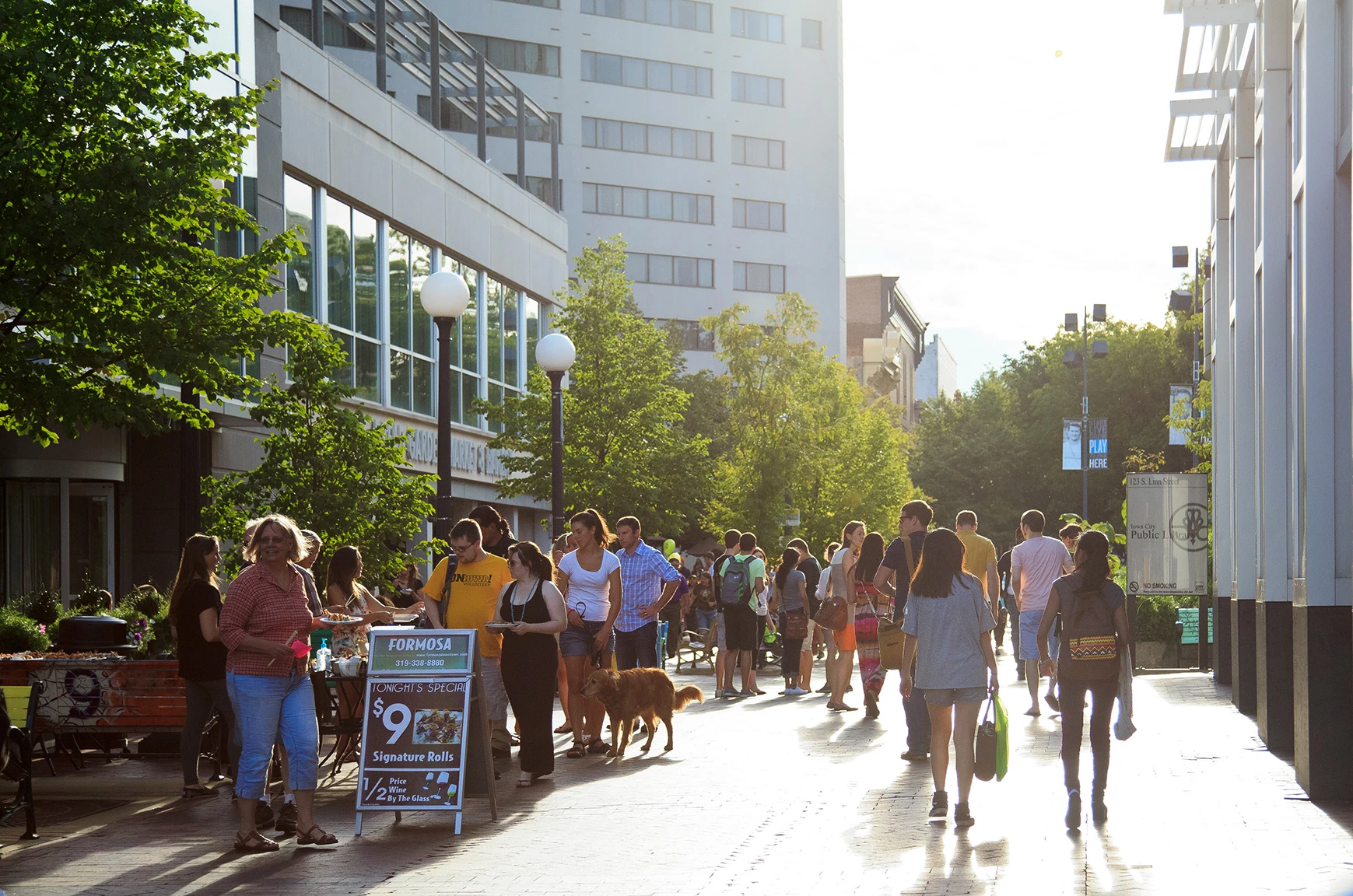
2. More than 9,000 people walk through the Pedestrian Mall daily
The Ped Mall, also known as the Pedestrian Mall, is located in the center of downtown Iowa City. It was completed in 1979 as the centerpiece of the city’s urban renewal project to attract residents. Today it’s one of the few pedestrian malls still in existence.
In the summertime, the Ped Mall draws large crowds during Iowa City’s Friday Night Concert Series, the annual Iowa City Jazz Festival, and the Iowa City Arts Festival. See why so many people visit every day and explore the variety of shops and restaurants for yourself.
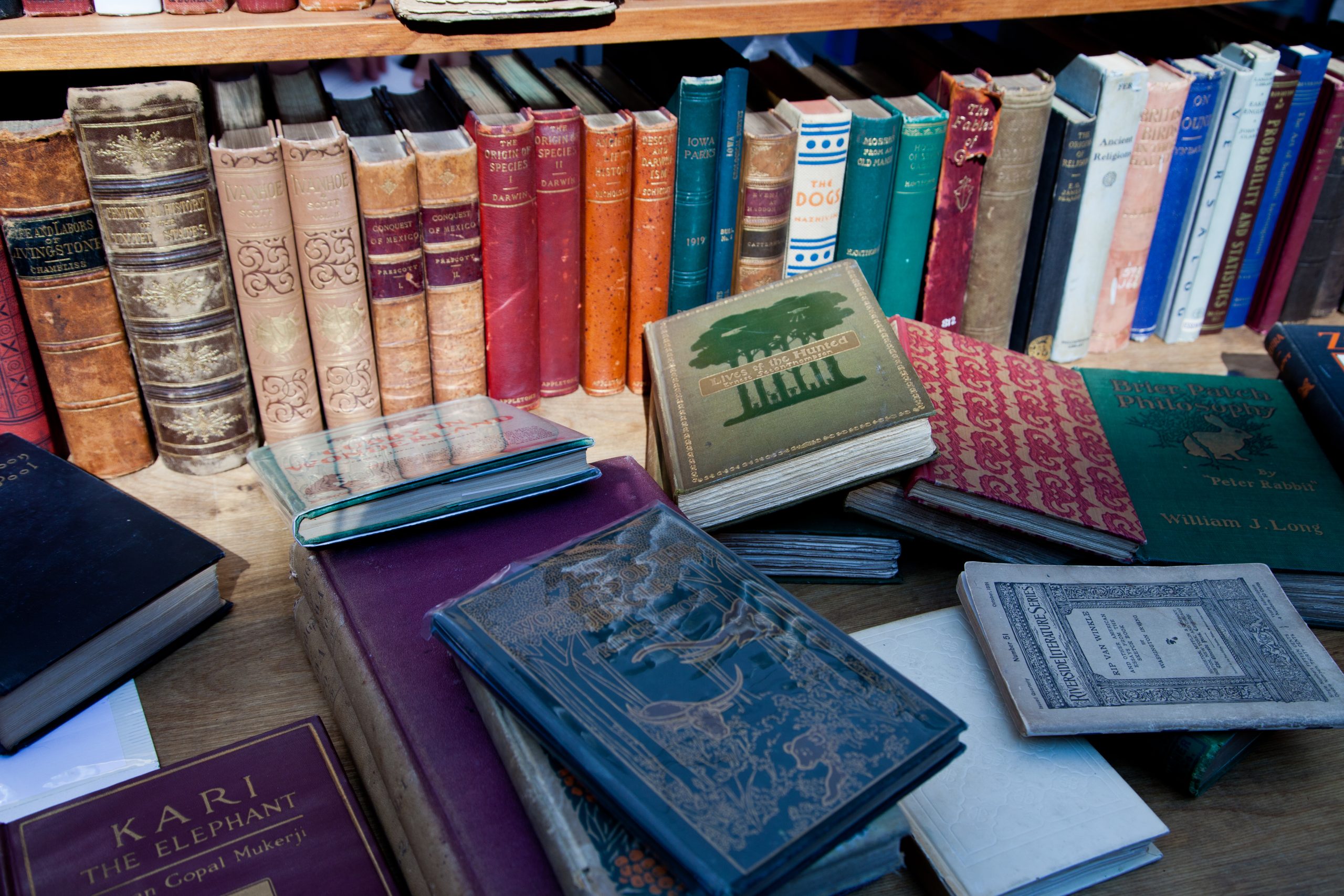
3. Edinburgh, Melbourne, and Iowa City are all part of a wider Creative Cities Network
In 2008, Iowa City became the world’s third United Nations Educational, Scientific and Cultural (UNESCO) City of Literature. To qualify to become a City of Literature, a city must apply and show they meet the criteria. Because of Iowa CIty’s unique set of influential literary institutions, it has become one of the most literary cities on earth.
There are 53 Cities of Literature, spanning thirty-nine countries and six continents. Iowa City and Seattle are the only two cities in the United States. Iowa City has celebrated this amazing title by creating the Iowa City Literature Walk, which includes 49 bronze panels stamped into a concrete walkway with quotes from writers with ties to Iowa. The city also hosts annual events like the Iowa City Book Festival and Music IC.
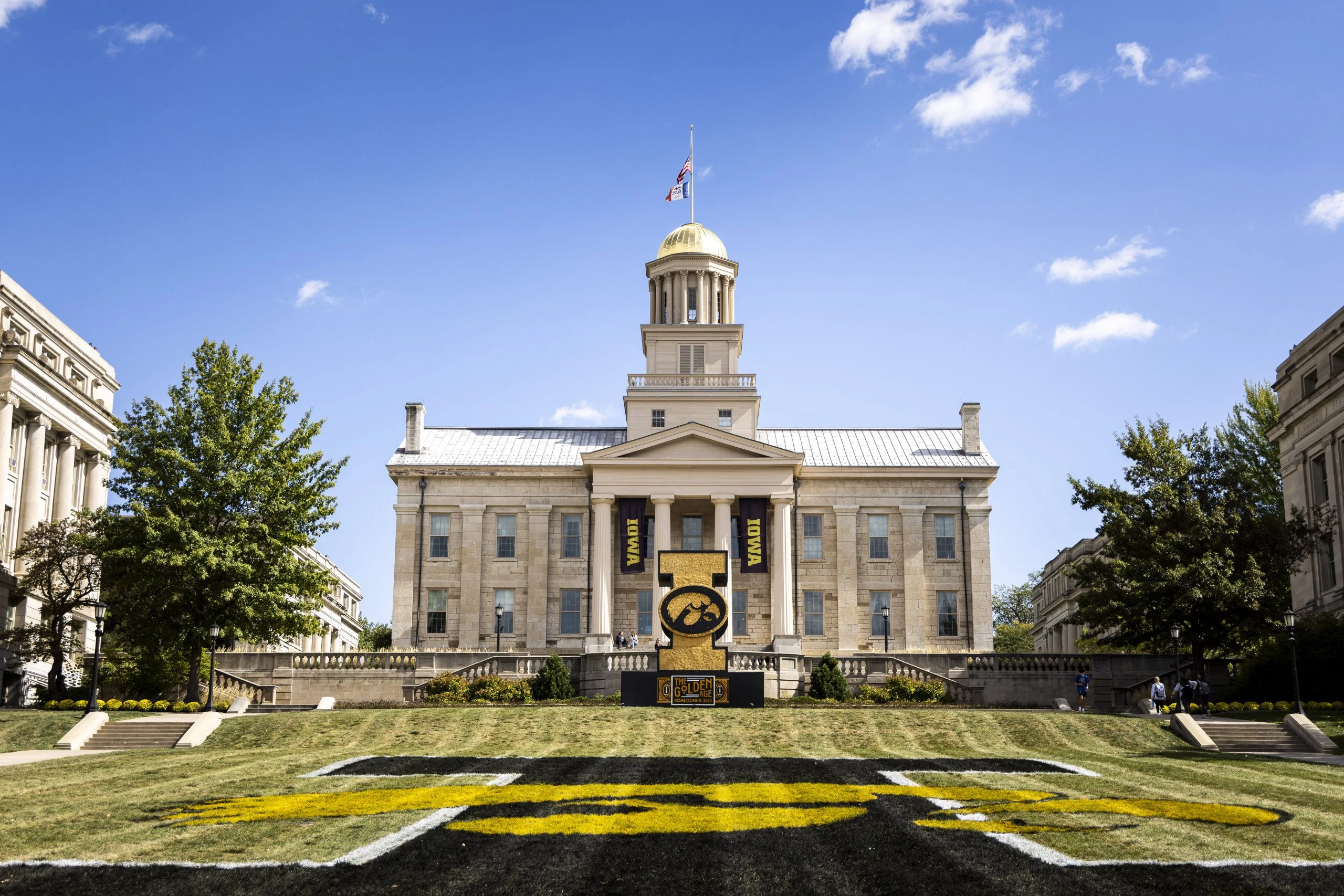
4. Stone for the Old Capitol was quarried 10 miles north of Iowa City and floated down the river on barges
The construction of the Old Capitol Building and how it came to life is an interesting story. Crews started building the Old Capitol on July 4th, 1840, but nine days later the project’s architect, John F. Rague, resigned leaving a government commissioner to oversee construction. Most of the four-ton blocks of Devonian limestone used in the original construction were quarried from bluffs along the Iowa River near North Liberty and then floated on barges to Iowa City. From there, oxen hauled them to the construction site.
Today the Old Capitol remains one of the most recognizable landmarks in the state. At the center of the University of Iowa’s campus, the Old Capitol Museum is open for visitors to learn about the building’s history, and admission is always free.
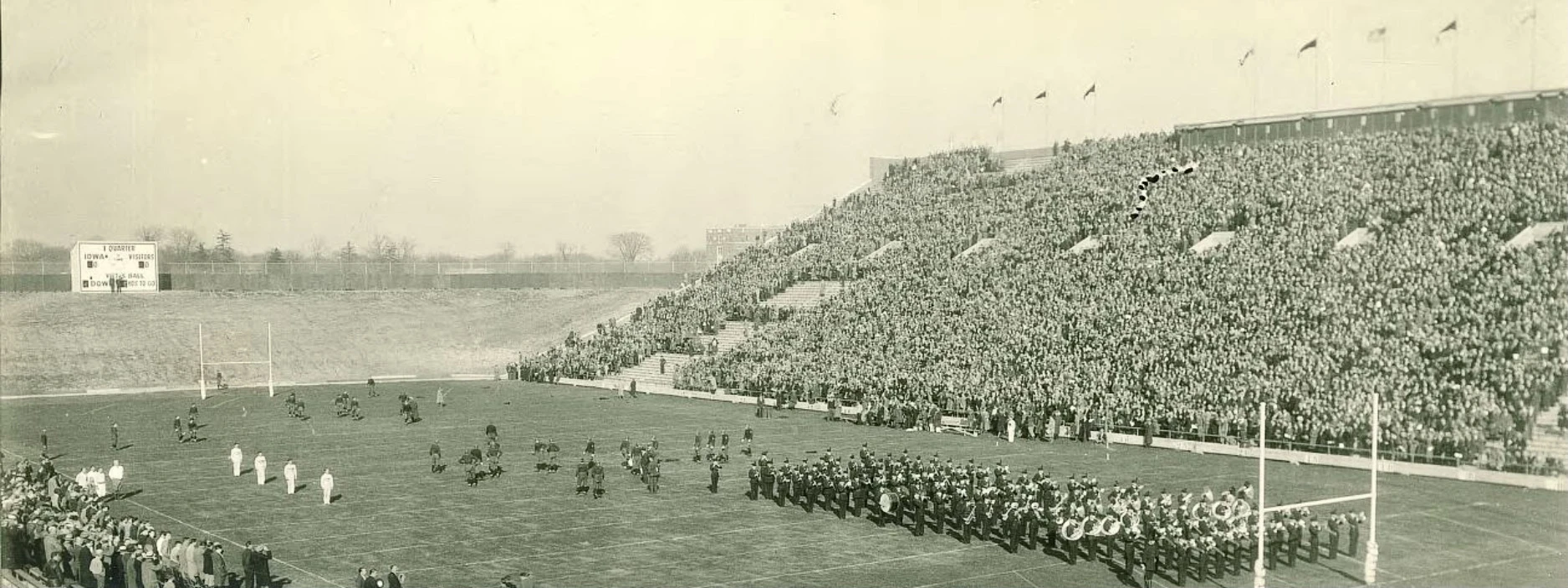
5. Tickets for the first game at Kinnick Stadium were just $3 per ticket
The Hawkeyes hosted Illinois for homecoming at a dedication game on October 19, 1929. Each ticket to the game was just $3, which would be an absolute steal today. However, according to an online inflation calculator, a $3 ticket in 1929 would be the equivalent of $50-$55 today.
The game was a rainy one, forcing fans to walk across boardwalks to avoid mud puddles. Some fans even arrived at the stadium without their shoes. Along with the disappointing weather, the game also ended in a 7-7 tie.
Today you can find tickets to a Hawkeye football game, sometimes as low as $73 per ticket on sites like SeatGeek. Catching a game in person is an experience in itself, but it’s even better when you can make a fun weekend trip of it.

6. Howard Francis Moffitt built hundreds of whimsical houses in Iowa City and Coralville without any formal architectural training
Howard F. Moffitt was an entrepreneur who teamed up with Ray Blakesley in the 1920s after recognizing a large demand for rental properties. This demand was from the large enrollment boom at the University of Iowa between 1916 and the 1930s.
Together the two men began a side business building houses as cheaply and quickly as they could. Moffitt had no professional training and did not use traditional blueprints, which he deemed too expensive and unnecessary. He created his homes with scrap metal, parts salvaged from burned buildings and demolition sites, limestone from the river, and rails from the discontinued streetcar system. The style of these Moffitt cottages is often referred to as quirky and eccentric.
Today you can scroll down the Muscatine Avenue Moffitt Cottage Historic District, which includes five stone cottages epitomizing Howard Moffitt’s architectural style, inspired by designs he found in magazines. There are more than 100 Moffitt houses in Iowa City and Coralville, and no two houses are the same.
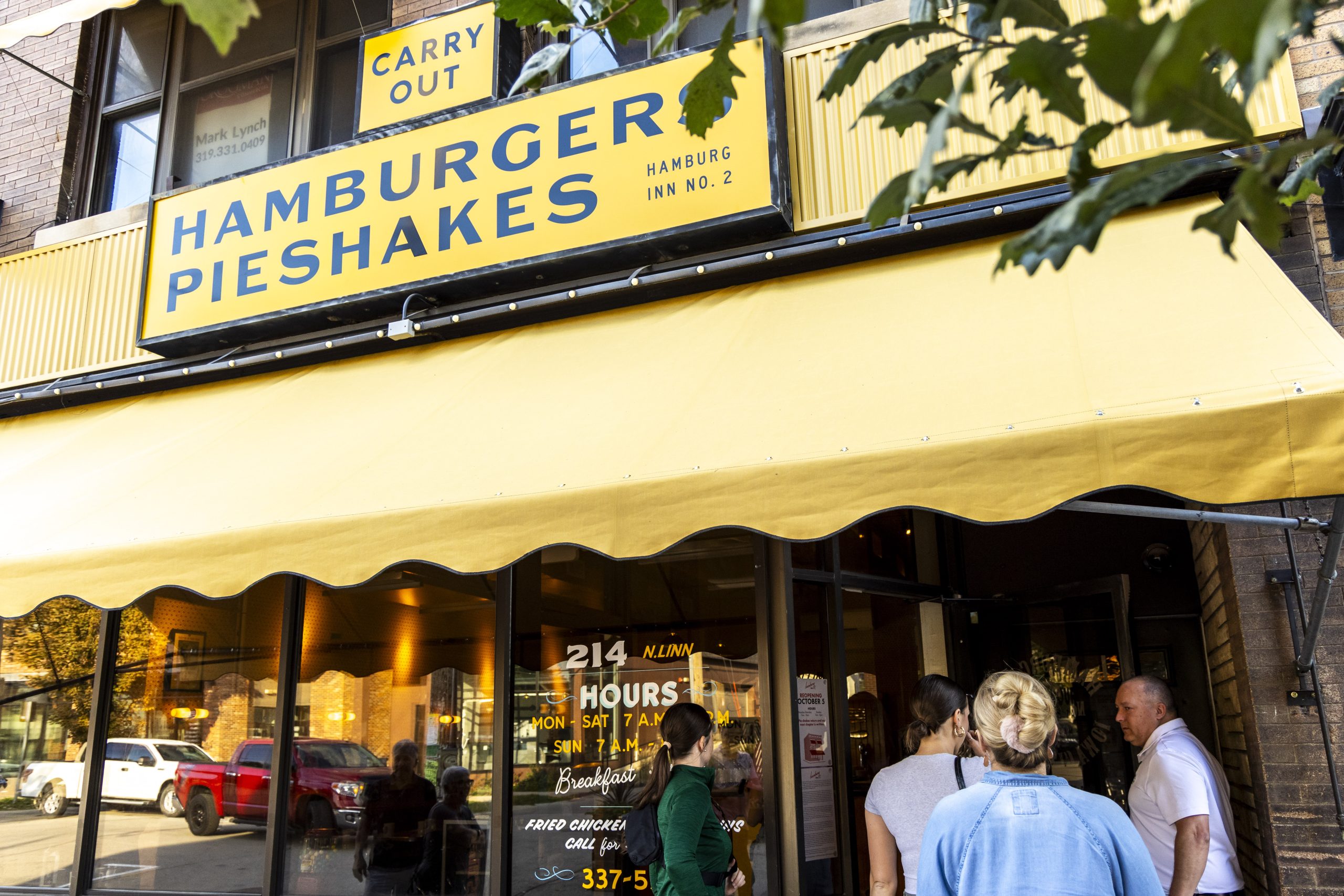
7. The Hamburg Inn No.2 in Iowa City was featured in an episode of “The West Wing.”
The nostalgic and newly remodeled diner in Iowa City, the Hamburg Inn No. 2 is not only known for its classic menu, but it has previously been a major pit stop on the presidential campaign trail. In the past, Bill Clinton and Ronald Raegan, along with many others, have stopped in to enjoy a meal and connect with residents. The diner’s role in the race to the White House was even immortalized in an episode of “The West Wing” called King Corn.
But the Hamburg Inn No. 2, (also referred to as “The Burg”) isn’t all about politics. They have received national recognition for an interesting concoction on their menu: the pie shake. The pie shake, which was featured in the New York Times, is just what it sounds like: a milkshake made with ice cream, milk, and a slice of pie.
If you’re ever in the area, you’ll want to check out the delicious food and fun ambiance at the Hamburg Inn No. 2. The diner temporarily closed in 2023, but it’s back and ready to serve on the Northside in Downtown Iowa City.
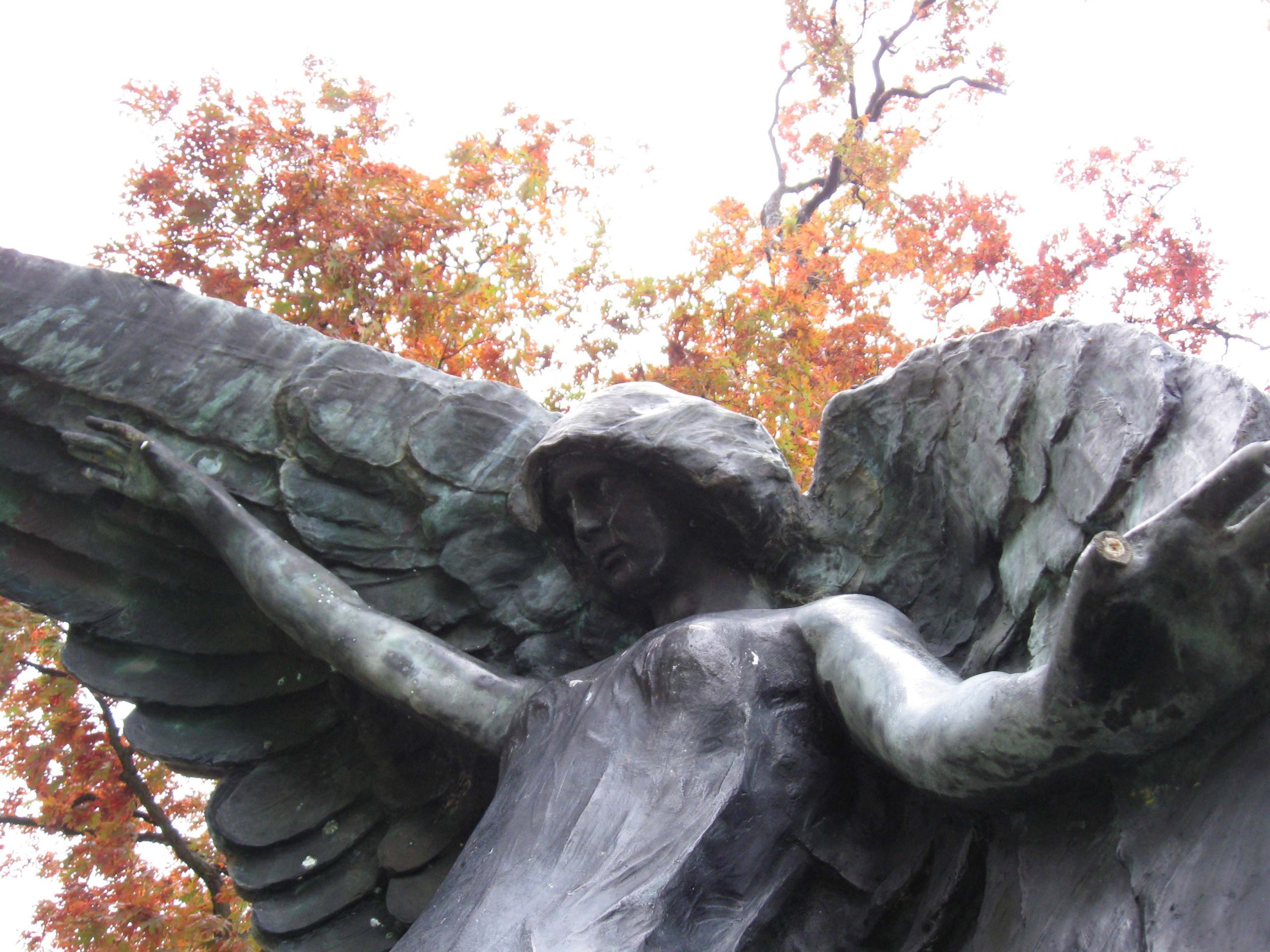
8. Rumor has it that if you kiss or touch the Black Angel statue in OakLAND Cemetery on Halloween, you’ll be struck dead
Oakland Cemetery, which encompasses 40 acres, is home to many local graves within Iowa City, but one particular statue has become the star of the cemetery. The legendary 8.5-foot Black Angel monument was erected for the Feldevery family in 1912. Since then, the monument has been riddled with myths, superstitions, and legends surrounding its mysterious change in color from a golden bronze cast to an eerie black. This striking color and its size make it a sight to see.
While experts say the bronze statue is now black due to the oxidation of the metal resulting from exposure to the elements, we wouldn’t chance kissing it—especially on Halloween, just to be safe. But if superstitions are your thing, visit if you dare!
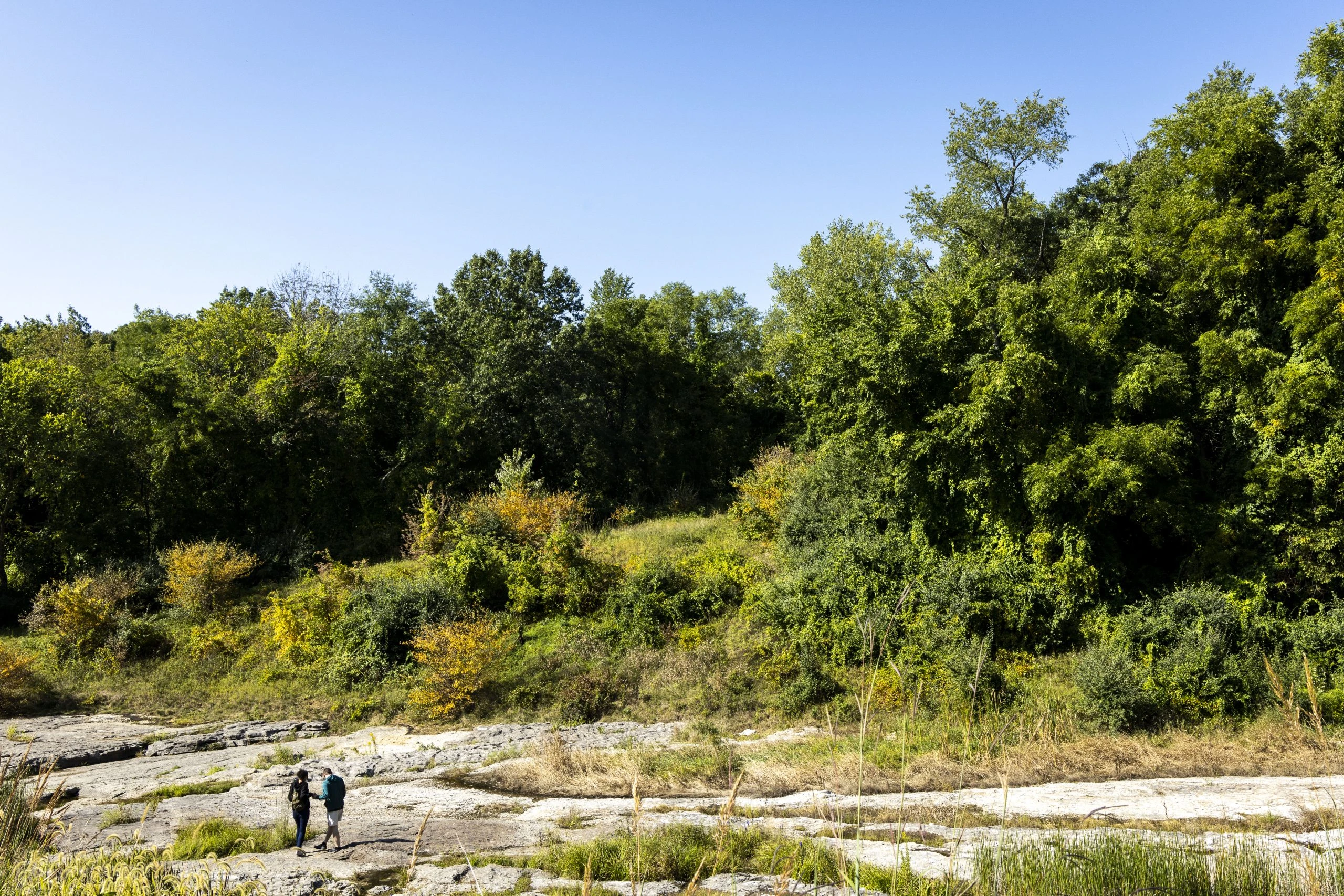
9. You can walk on a 375 million-year-old ocean floor at Coralville Lake
During the summers of 1993 and 2008, Coralville Lake exceeded its maximum capacity, and excess water flowed over the emergency spillway. The 1993 overflow continued for an astonishing 28 days and washed out everything in its path. It also removed up to 17 feet of soil and rock exposing the Devonian bedrock that became the Devonian Fossil Gorge.
The Devonian Fossil Gorge now provides a glimpse into Iowa’s geologic past and is like walking across a 375 million-year-old ocean floor. The fossils recovered from the gorge are almost 200 million years older than the dinosaurs and show Iowa was once south of the equator and covered by warm, shallow seas similar to what the Caribbean Sea is today.
Many visitors enjoy exploring the Devonian Fossil Gorge at Coralville Lake. Some have even expressed how they didn’t expect to have as much fun as they did there!
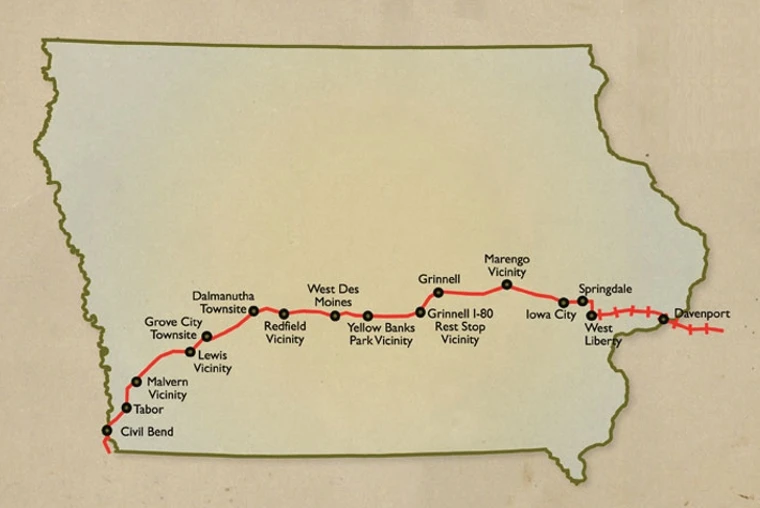
10. Iowa City was a major hub for the Underground Railroad.
We all learned about the Underground Railroad in school, but did you know there were major ties to Iowa City? The Underground Railroad served as a network of people and safe houses that worked together to transport slaves from slave states to free states. Iowa played a significant role because of its geographical location to Missouri, a slave state to the south, and Illinois, a free state to the east.
The main route in Iowa started in Tabor and moved through towns including Lewis, Des Moines, Grinnell, Iowa City, West Liberty, Low Moor, and Clinton. Many safe houses and points of protection were established in the Johnson County area, making it a critical hub for the abolitionist movement.
Did you learn something new about Iowa City? Did our post inspire you to visit one of these attractions? We want to hear from you! Share this blog on social and let us know what surprised you.

